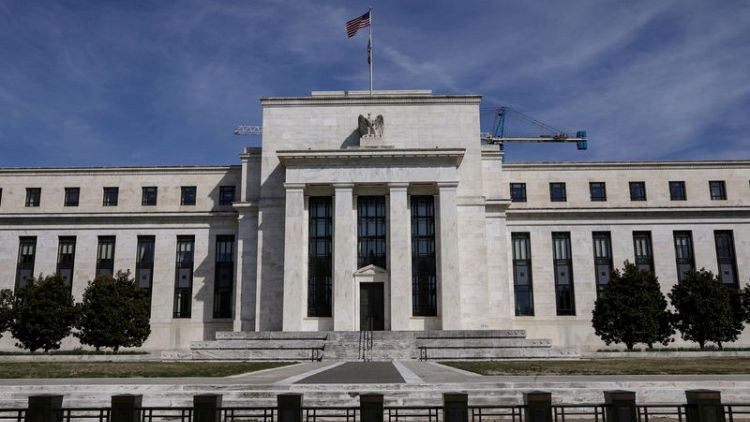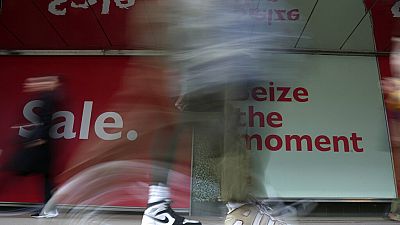By Hari Kishan
BENGALURU (Reuters) - The U.S. Federal Reserve is done raising interest rates until at least the end of next year, while about a third of economists polled by Reuters who had a view that far out predicted at least one rate cut by then.
The latest results come just days after Wall Street stocks touched record highs in a bounceback from a rout at the end of last year, thanks in large part to expectations that benchmark borrowing costs have now stopped in their tracks.
In a March 15 poll, more than 70 percent of economists had pencilled in a hike this year. But a similar majority predicted no hikes or at least one rate cut by the end of 2020 in a March 29 survey, right after the Fed dramatically shifted its "dot plot" projections to suggest no more hikes this year.
The view the Fed's tightening cycle, which began in December 2015, is over has strengthened further in the latest poll of more than 100 economists taken April 22-24. An increasing number of respondents are now predicting a rate cut by the end of 2020.
"I think the bar is pretty high for tightening," said Jim O'Sullivan, chief economist at High Frequency Economics. "They don't just want inflation to get back up to 2 percent, but they want it to go above 2 percent for a while."
Interest rate futures are already pricing in the likelihood of a rate cut later this year.
History shows the Fed has almost never raised rates after a very long pause in the middle of tightening. Many analysts say it would likely need inflation to run hot for a prolonged period to justify another rate hike, especially this late in an already long economic cycle.
But core PCE inflation - which the Fed watches closely - is not forecast to rise significantly. It is instead predicted to remain below the 2 percent target in each quarter this year and average 2 percent in each quarter next year.
"The Fed is going to be on hold indefinitely from here," said Ethan Harris, head of global economics research at Bank of America. "It's got nothing to do with growth data - the growth data look fine - the economy is coming back to trend. In fact, if anything, the data are slightly better than expected right now, so it's all about inflation."
With recent data coming in better than expected, the latest growth forecast for the January-March quarter was upgraded to an annualised 2.0 percent compared with 1.6 percent predicted in the previous poll.
The current quarter's expansion was pegged at 2.5 percent but momentum is expected to gradually ease after that, falling to 1.8 percent in the first quarter of 2020.
Still, only a handful of economists have pencilled in a recession by the end of next year.
While the median probability of a U.S. recession in the coming 12 months held steady at 25 percent compared to the previous month, it was down to 35 percent for the next two years from 40 percent in the March poll.
"We do not believe a recession is imminent. We do see GDP growth slowing over the next 18 months as fiscal stimulus tailwinds fade and previous tighter monetary policy actions take hold," said Sam Bullard, senior economist at Wells Fargo.
"That said, event risk is high and has the potential to provide the catalyst for the next down turn."
But the bond market is telling a different story, with the yield gap between U.S. 3-month bill rates and 10-year Treasuries - closely watched by the Fed and increasingly so by market participants - inverting in March.
An inversion, when shorter-dated maturities yield more than longer-dated ones, has in the past been a reliable predictor of recessions.
Over 60 percent of economists who answered an extra question said the bond market is giving a wrong steer this time.
"The long end of the curve is unusually low, and it is not driven by the risk of a recession in the U.S. as much as it is we have got chronically low rates outside of the U.S. and we have the big fat balance sheet," added Bank of America's Harris.
(Polling by Sujith Pai, Tushar Goenka and Anisha Sheth; Editing by Ross Finley and Hugh Lawson)



